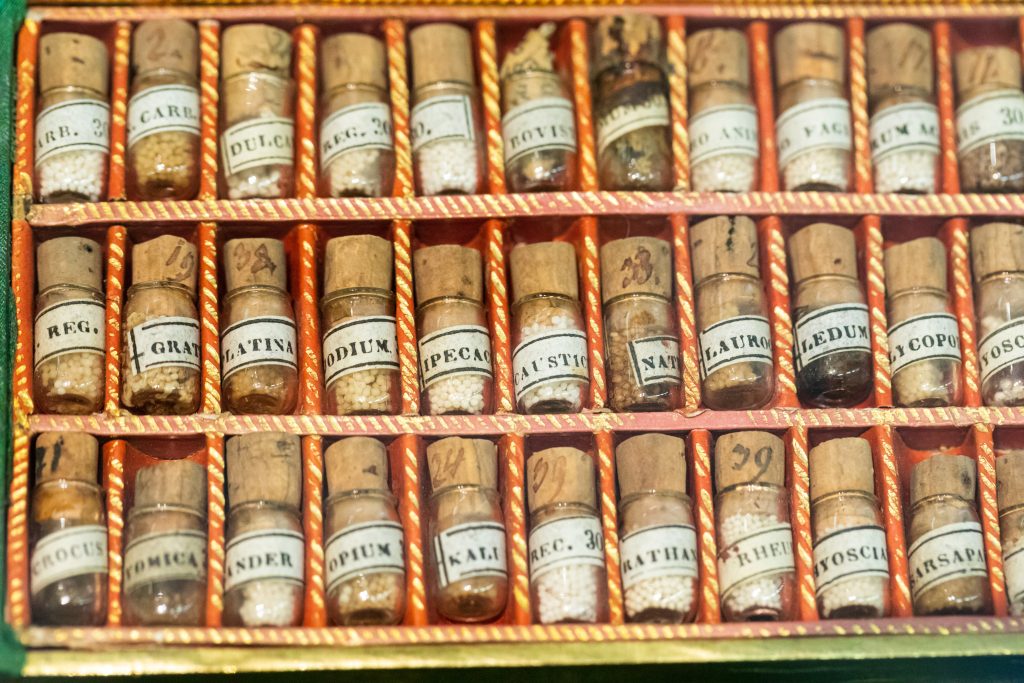6.4 Supplements and Foods for Health and Well-Being
Dietary Supplements

What is a dietary supplement?
Health Canada regulates natural health products (NHPs) so that Canadians can have confidence that the products they use are safe, effective and of high quality. Labels are an important tool to assist Canadians in making informed health choices when selecting and using NHPs
- Probiotics
- Herbal remedies
- Vitamins and minerals
- Homeopathic medicines
- Traditional medicines such as traditional Chinese medicines
- Other products like amino acids and essential fatty acids
Are dietary supplements different from foods and drugs?
In the U.S., dietary supplements are regulated as a category of foods, but in Canada, dietary supplements—or what Health Canada calls “Natural Health Products” (NHPs)—are treated as non-prescription drugs
What claims can manufacturers make for dietary supplements and drugs?
As a result of this more rigorous regulation, however, dietary supplements sold in Canada may be allowed to make more drug-like marketing claims, such as claims to the treatment or prevention of particular diseases or conditions (provided these claims are within the scope of the product’s Canadian NHP license).
Why are regulations needed for natural health products?

Before January 1st, 2004, natural health products (NHPs) were sold as either drugs or food under the Food and Drugs Act and Regulations because there was no other category under which to classify them. If classified as a drug, natural health products must follow the drug review process (including proving safety and efficacy through clinical trials) and have a Drug Identification Number (DIN) to be sold. If classified as a food, natural health products can make only very limited health claims and do not have to provide much safety information on their labels. As more and more Canadians began to use NHPs, it became obvious that neither classification (as either a drug or food) was appropriate, and that a new policy that would directly address the unique nature of NHPs was needed. The Natural Health Products Regulations were developed to address this need.
Natural health products are regulated as a subset of drugs under the Food and Drugs Act. Why doesn’t Health Canada regulate NHPs as a distinct category separate from both food and drugs?
Under the Food and Drugs Act, NHPs must be classified as either food or drug since there is no other category in which to classify them. Because NHPs are taken for therapeutic reasons and not for caloric purposes or to address hunger, they are more similar to drugs than food. Under the current Food and Drug Regulations, foods can make only limited diet-related or nutritional content claims (and not treatment claims, for example). Also, the current regulations do not include a complete good manufacturing practices framework which is needed to ensure the quality and safety of NHPs. Finally, foods are generally not subject to pre-market review and assessment by Health Canada before they can be sold.
What types of natural health products are affected by the Natural Health Products Regulations

Natural health products (NHPs) are defined in the Regulations as vitamins and minerals, herbal remedies, homeopathic medicines, traditional medicines (like Traditional Chinese Medicines), probiotics, and other products like amino acids and essential fatty acids. Under the Regulations, a natural health product must be safe to be used as an over-the-counter product. Natural health products are available for self-care and self-selection and do not require a prescription to be sold. Products requiring a prescription will continue to be regulated under the Food and Drug Regulations.
Why will homeopathic medicines have a DIN-HM on their label, while other natural health products will have an NPN?
Homeopathic medicines are treated differently under the NHP Regulations because they can contain or be manufactured from substances (Schedule F or Schedule D substances) that are not otherwise regulated under the Natural Health Products Regulations. The unique designation for homeopathic medicines will help consumers and compliance/enforcement officers identify the product as homeopathic medicine. While similar to the requirements for NHPs, these products also have to meet specific Good Manufacturing Practices and unique standards of evidence.
Why are vitamins and minerals regulated as a sub-set of drugs?
Vitamins and minerals are regulated as a sub-set of drugs because they are considered to be natural health products, which are governed by the Natural Health Products Regulations. Previously, vitamins and minerals, in dosage form, were regulated as drugs under the Food and Drug Regulations. However, because they are intended to be used for health benefits, they need to have instructions for use on their label. As recommended by the Standing Committee on Health, regulating vitamins and minerals as a sub-set of drugs brings the treatment of these products into line with that of other products that fall within the definition of a natural health product (like homeopathic medicines and herbal remedies).
Botanical Dietary Supplements

Botanicals are sold in many forms: as fresh or dried products; liquid or solid extracts; tablets, capsules, powders; tea bags; and other forms. For example, fresh ginger root is often found in the produce section of food stores; the dried ginger root is sold packaged in tea bags, capsules, or tablets; and liquid preparations made from the ginger root are also sold. A particular group of chemicals or a single chemical may be isolated from a botanical and sold as a dietary supplement, usually in tablet or capsule form. An example is phytoestrogens from soy products. Common preparations include teas, decoctions, tinctures, and extracts:
- A tea, also known as an infusion, is made by adding boiling water to fresh or dried botanicals and steeping them. The tea may be drunk either hot or cold.
- Some roots, bark, and berries require more forceful treatment to extract their desired ingredients. They are simmered in boiling water for longer periods than teas, making a decoction, which also may be drunk hot or cold.
- A tincture is made by soaking a botanical in a solution of alcohol and water. Tinctures are sold as liquids and are used for concentrating and preserving a botanical. They are made in different strengths that are expressed as botanical-to-extract ratios (i.e., ratios of the weight of the dried botanical to the volume or weight of the finished product).
- An extract is made by soaking the botanicals in a liquid that removes specific types of chemicals. The liquid can be used as-is or evaporated to make a dry extract for use in capsules or tablets.
To learn more about a specific dietary supplement try the Dietary Supplements Fact Sheet – Health Canada catalogue.
- Vitamin C Exploration:
- Websites on the origins of plant-based medicine and a source a collection of articles on “Green Medicine.”
- Plant Parts Used for Medicinal Purposes (USDA Forest Service) – Canadian Coalition for Green Care
- CTV News – ‘Nature therapy’ program offered as a new medical prescription to Canadians
References
Legislative Services Branch. (2023o, February 15). Consolidated federal laws of Canada, Natural Health Products Regulations. https://laws-lois.justice.gc.ca/eng/regulations/SOR-2003-196/
Government of Canada. (2020a, July 30). General Questions – Regulation of Natural Health Products. Retrieved February 2, 2022, from https://www.canada.ca/en/health-canada/services/drugs-health-products/natural-non-prescription/frequently-asked-questions/general-questions-regulation.html

